Based on the GAZ AAA and BA-10
The BA-22 was a Soviet armoured ambulance developed in the late 1930s by GAZ, armored by Izhorskiy on a BA-10 armoured car chassis. It started development in 1939, as an armoured evacuation vehicle, the first such dedicated vehicle in the Soviet Army. However tested and rejected by the ABTU RKKA for service, the single prototype only built was kept for testings until the end of the war. It could have become also the first Soviet APC.Design development
In the 1930s among other the red army looked after a modern mobile medical service, which was to be provided a host of medical trucks and buses, but also to develop an armoured vehicle for that task to fit the "deep battle" doctrine requirements: The vehoicles needed to pick wounded straight in the frontline and repatriate them to safety sometimes under a large area potentially controlled by the enemy. But this idea did not materialized before 1938 -or 1937 dependong on the sources- and a an acronym was specified, BMM, for "armored medical vehicle". The experimental vehicle based on this idea would took the name of BA-22.In 1938 so, the sanitary department of the Red Army expressed the need for special sanitary and transport armored car able to reach the front line, possibly under intense shelling. The Armored Directorate agreed with this and registered a new project, the BMM, which was given to the Crushing and Grinding Equipment Plan based in Vyksa. The latter indeed had previous experience with specialized armored cars, atlthough most remained prototypes.
By the mid-1938, the DRO Plant prepared a final project based on existing chassis and by September created an "armored moto-medical center" based on the GAZ-AA chassis, called the BA-22. In autumn and winter 1938, factory tests in Vyksa helped refine the prototype (most rare photos came from here). The BA-22 prototype had all major issues worked out and it was presented and handed over to the ABTU for testing at the Research Armored Range. This process only started by May 15, 1939, until June 23, 1939. A report was prepared listing design flaws to be corrected at Vyska.
The tests showed the BA-22 could run 1,179 km total on various terrains, and it was also tested under shelling to determine shrapnel effects. Based on this thorough study, this project was rated low in priorities, and with an ongoing quasi-war with Japan, other projects had priorities. The report just noted that the BMM "did not meet the requirements" and denied service or mass production. One crucial issue, later resolved that the original engine only provided 7,7 hp. per ton, compromising the vehicle's tenure on rough terrain and a top speed too slow to get away under potentially enemy fire.
The other point was the armoured hull, which interior was badly optimized and with three meters high was difficult to camouflage and too conspicious on the battlefield. It just attracted excessive attention from the enemy. The thickness and slopes were insufficient, again due to the compartment's design, and not well isolated from the elements. The rear foor was said to be "leaky". The internal equipment also lacked to be desired, and failed to meet sanitary and hygienic requirements, not fitting its main task of carrying back the wounded in satisfacting conditions. Due to all of this, the ABTU declined its adoption and the project was closed. The vehicle however was handed over to the Scientific Research Sanitary Institute of the Red Army which also tested ot and drew conclusions to create a new new dedicated vehicle, plus possibly a first APC (since it could carry up to ten armed infantrymen).
Design
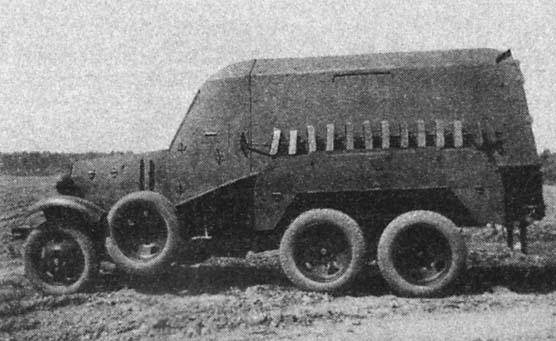
The vehicle as said above was based on the BA-10 chassis, but without the turret and completely remodelled cabin and rear compartment, much taller. It only shared the armoured hood with the original armoured car. The BA-22 was lighter than the BA-10 at 5,240kg, but still 6.10m long, 1.98m wide, and 2.88m on top of the rear compartment's roof. Armoured but unarmed, except the driver and co-driver personal weapons, it apparently used a 71-TK-1 receiver-emitter to run to the location of the wounded, short range radio.
The main feature was its rear armored body, which only had light protection, only made of 6mm steel rolled homogenous armor forward on the cabin, enoigh to stop small arms fire and shrapnel. This rear compartment defined a large internal volume thanks to tall walls, rounded roof line, large doors aft for easy access and internal modularity for its tasks. Some of the armor was lightly sloped.
The engine was covered with an armored hood, basically the same as the BA-10, with louves and hatches for the radiator and better access for maintenance. Boxes were provided on top of the rear axles as part of the flanks, increasing protection. There were no windows, but in double rear door, opening left and right. The internal arrangement of the rear compartment was made either to carry sedentary or bedridden patients, and the volume was defined by a cross-section 1.5 times higher than the BA-10, making it easier to spot. That way, two stretchers could be attached on each side, while a nurse and doctor could stand between them at full height inside. The driver and co-driver (usually a nurse, which could access en route the rear compartment) had their own side doors with shutters, front and sides. Most of the time, the front ones were in lifted up position to help visibility.
The rear compartment comprised both benches and stretcher mounts along the walls, alternatively. When the four stretchers were in place, benches were removed. This made for a capacity of four lying wounded in two tiers, or alternatively 10 seated wounded soldiers with full equipment, or even 12, in part standing.
Engine
The BA-22 initially chosen 40 hp GAZ-A gasoline engine was clearly too weak for the armoured body and instead a 50 hp M-1 was chosen. Fuel tank capacity was also increased to 109 liters. The standard mechanical transmission had for some authors 8 forward gears, not two, plus 2 reverse gears, not one.The Vehicle had the same GAZ AA engine, too weak for such weight, a 4-cylinder which developed 60 hp, for a top speed of 40km/h on flat, connected to a 4 forward, 1 reverse gearbox. It had classic dick brakes and fuel Capacity was 109 liters with a range on flat of about 250km on road. The Suspension on three axles in a 6x2 configuration was done with leaf springs. The vehicle was apparently capable to climb a maximum grade of 24°. For better mobulity were strapped on the mudguard above the two rear axles, an Overoll track chain stowed suspended alongside the hull and deployed on the rear axles, making it able to be used in winter, acting as a half-track.
Production
There was none, simply put. It seems only one prototype, later modified numerous times, was ever produced. The only photos of it showed always the same vehicle in test conditions, probably in 1939. This vehicle was given the caracteristic Overoll track chain, stored and straped above the utility boxes acting also as extra protection over the mud chutes. No other photos exit tO substantiate any claim of a combat use. There are some claims the vehicle was indeed produced in small quantities and saw service in Stalingrad but it was likely counfounded for another vehicle. In most sources it is always cited as a failed experimental vehicle.Active service
Due to its rejection by the ABTU RKKA, the BA-22 never went into service, although it was tested in 1940-41, and the experience, pioneering the first Russian dedicated armored medical vehicle and potential first armored personnel carrier motivated the creation of new medical armored vehicles and several new ambulances were based on serial chassis. They were were not inferior to the BA-22, but lacked armor and thus were never intended to serve on the front line. Until 1945 indeed, the Red army lacked a proper medical armored car, using other vehicles for the purpose, like the small BA-64, although it was always improvized. Main srcBA-22 specifications | |
| Dimensions (L-w-h) | 6.10 x 1.98 x 2.88 m |
| Total weight, battle ready | 5.24 tons |
| Crew | 2 (driver, nurse) +10 wounded (seated) or 4 in strechers. |
| Propulsion | 4-cyl petrol GAZ AA, 50 bhp (40 kW) |
| Speed | 40 km/h on road |
| Range (road) | 250 km |
| Armament | None (personal weapons only) |
| Armor | 6mm RHA |
| Total production | One prototype |
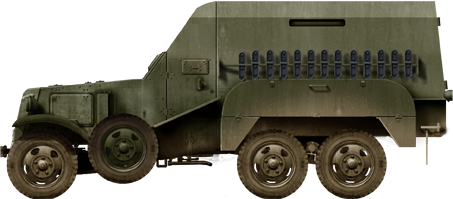
Gallery
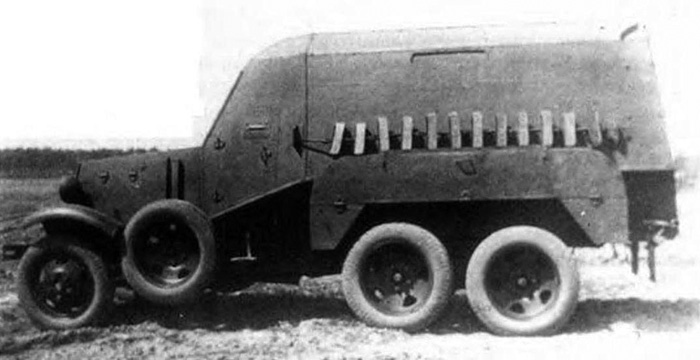
Side
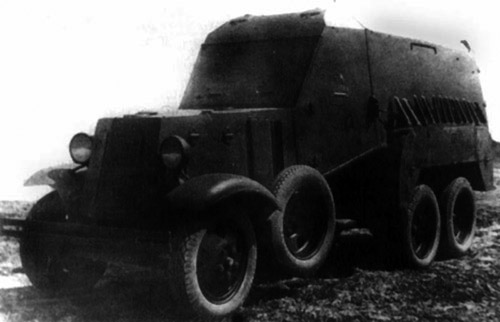
3/4 forward view
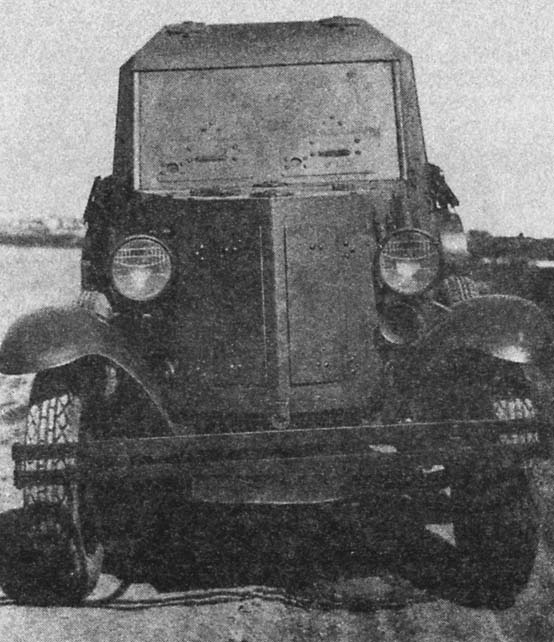
Front
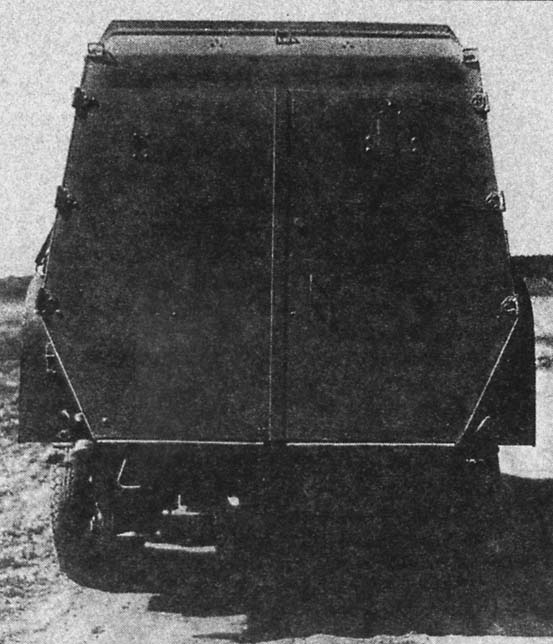
Rear

WW2 Tanks




























WW2 tanks posters

All Tiger tanks liveries.

Panther liveries and variants

WW2 Armour - All tanks











Tanks aces and single tanks series

Find more there

Museums, Movies, Books & Games
The Tanks and Armor in pop culture
Tanks and armored vehicles in general are only really grasped when seen first person: The mass, the scale, it's all there. Explore also the way tanks were covered in the movie industry, in books and in video games.Movies:
Best tanks movie on warhistoryonline.com
On imdb.com
On bestsimilar.com/
miltours.com
liveabout.com/
watchmojo.com
Video Games:
pcgamesn.com
historyhit.com
levvvel.com
vg247.com/best-tank-games
mmobomb.com/
alienwarearena.com

